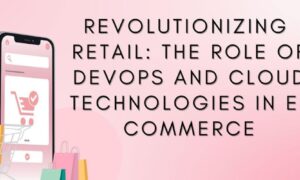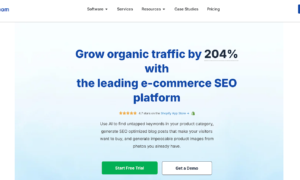Online shoppers are becoming more tech-savvy by the minute, and, their expectations and buying patterns are being strongly impacted by IoT apps, connected devices, and touchpoints. With smart voice assistants and interfaces in stores, customers are getting product information in innovative ways, changing the way they shop.
E-Commerce giants like eBay and Amazon are among the many companies that have adopted headless architecture, and are able to deliver outstanding buying experiences to their customers.
What is headless commerce?
It separates the client-side (that part of the website that users interact with) and server-side (the technology responsible for making everything work) components of an E-Commerce website. So, the presentation layer, like a theme or template powered by a CMS is decoupled from Magento, WooCommerce or other e-commerce platforms. This allows an e-commerce development company to help retailers offer exceptional brand experiences through superior content and immense flexibility.
E-commerce is intensely competitive, and to be successful, you need to provide a shopping experience to your customers that is seamless and faultless, across your sales channels. This is the reason that an increasing number of e-commerce owners are switching to headless commerce. They are able to offer unique customer experiences by scaling their operations and making them more flexible.
Why headless commerce? Read on:
Supports agile marketing
Headless commerce enables the introduction of innovative customer experience across channels and geographic locations in days. If you want to sell your offerings in another country, you can quickly set up an online store without re-creating a new service environment. Going headless allows you to adapt your strategies according to the business environment in that country. Headless commerce supports emerging technologies, enabling marketers to quickly respond to dynamic customer behavior across touchpoints and channels. Without it, you would find it very tough to cope with the effect of new touchpoint technologies. With headless commerce, you can forge strong bonds between your target audience and your brand by providing seamless, innovative, and tailored experiences to customers. An e-commerce development agency like Codilar, under the leadership of Hashid Hameed, can also leverage AI-based product search or e-commerce tools to help you stay agile and gain a competitive edge, getting your products to market quickly and providing fast browsing to customers.
Helps create an effective omnichannel strategy
Today, customers shop across multiple sales channels, often at the same time; this means that the retailer has to deliver engaging omnichannel experiences. Marketers need to consider how their digital presence will impact customers shopping on Amazon, eBay, and the like. You have to be very flexible to be able to offer an excellent omnichannel strategy, and this is impossible to achieve with conventional e-commerce solutions. With headless CMS, you can push your content like blogs, infographics, images, etc. across multiple channels where customers shop, and offer additional, innovative features. This can give customers a seamless and harmonious buying experience.
Enhance User Experience
Most people abandon carts if they don’t get a good UX when they are shopping on a site. Your software service provider can enhance your site’s UX in multiple ways, thanks to headless commerce. It boosts the speed, for one; it doesn’t have to carry the load of the presentation layer data like the chatbot, email marketing, CMS, and so on. The data transfer between modules is achieved using APIs, in smaller quantities. You can also test, upgrade, and tweak each module so that there is no disruption in the front end. All of this helps to increase speed and consequently, lead to better conversion rates. With each presentation layer module being isolated, it is possible to integrate systems and modules to ensure alignment with consumer requirements – thereby delivering tailored UX. There is no dependence on the e-Commerce platform to offer customers unique features; it can be achieved without disruptions in the system functioning.
This gives you a fair idea about why we need headless commerce.
So, are there any drawbacks? Yes, as with everything else.
Lesser control over store setup
The presentation layer contains account data, content, and checkout process flows, and you can’t access the server that stores this data in headless commerce. This means you are dependent on your e-commerce service provider or invest in ‘head’ technologies. Your functionality could be limited by the support offered by your CMS. It would be wise to identify what your CMS allows and doesn’t allow before you switch to headless commerce.
Initial setup cost is high
To implement any new technology, you will need to spend a fair bit of money; if you are considering a move to headless commerce, remember that you may not be able to use the theme as the basis when you hire an expert software company for client-side development. They will be able to do it using themes from Shopify or Magento to make it economical and simple.
Summing up
Conventional full-stack e-commerce technologies supported the desktop computer-driven traffic excellently; however, with the increase in mobile traffic and innovative touchpoints, there is a greater need for speed, flexibility, and tailored experiences. This can only be facilitated with decoupled, headless architecture.



































